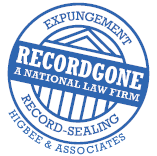On October 29th 2018, a new Ohio record sealing law came into effect that increases the number of convictions an individual may have on their record and remain eligible to have their cases sealed. The prior law was restrictive, and it left many deserving people behind. Ohio’s legislature corrects this problem with Ohio Senate Bill 66 and in doing so, recognizes the importance of expanding the opportunity for seeking a second chance. The bill works by amending the definition of an “eligible offender”, and by adjusting the waiting period required for each conviction to be eligible for sealing. This legislative action represents a positive step towards rewarding those who have demonstrated their efforts at rehabilitation.
After October 29th, an applicant for sealing may have up to five felony convictions with no limit on the number of misdemeanor convictions. Limitations are placed, however, on the type of the felony or misdemeanor conviction that can be sealed. Additionally, the number and severity of someone’s conviction will impact how long they will be required to wait before they are eligible to seek sealing relief. The sealing is discretionary, and the local prosecutor is provided the opportunity to comment on the request for sealing. So even though an individual may have multiple convictions on their record and still be eligible to apply, the court can still take into account the number of offenses when determining if the applicant’s deservingness for relief outweighs the interest of the government in maintaining public record of the convictions. In keeping the sealing discretionary, the legislature has recognized the need for balancing public safety with the need for people to be able to move forward with their lives after paying their societal due.
If an applicant is not eligible under the new elements of the sealing law, then their eligibility will be evaluated based on the previous elements of the sealing law. An applicant cannot seek sealing under the new law if their conviction is for something more severe than a fourth degree felony, or if their conviction is classified as a violent offense or a felony sex offense. Additionally, the number of convictions and the severity of the convictions determines the applicant’s waiting eligibility period as follows:
- One year from the date of final discharge if convicted of a misdemeanor.
- Three years from the date of final discharge if convicted of one felony.
- Four years from the date of final discharge if convicted of two felonies.
- Five years from the date of final discharge if convicted of three, four, or five felonies.
The benefits of a record sealing include being able to apply for a job or housing, and not have that conviction appear on the record. Many employers remain hesitant to offer jobs to those who have a criminal record, even if that record is years old and the applicant is otherwise well qualified for the job. A sealed record means qualified, rehabilitated applicants will be given a fair shake at a good job to provide for their family and themselves. The community benefits when rehabilitated people can get back to full employment and Ohio’s legislature recognizes this fact with this action to expand Ohio record sealing eligibility. Additionally, applicants for sealing in Ohio are provided the opportunity to opt in to an additional benefit and proactively update private background check databases with their record sealing through the Expedited Record Update Service. Ohio is moving itself to the forefront of balanced and just post conviction relief for its citizens.
If you have an Ohio record and you want to move on from your past record, contact us today to take a free eligibility evaluation! You can take the free online eligibility test or by calling one of our intake specialists at 877-573-7273. Let us help you achieve your best future!



